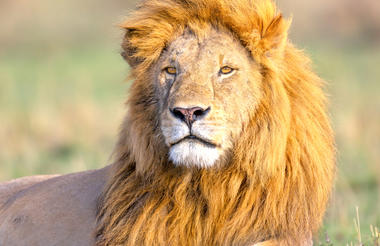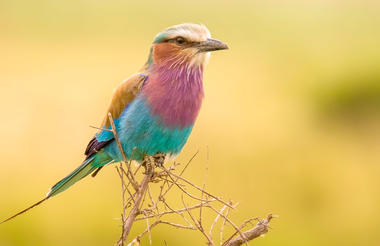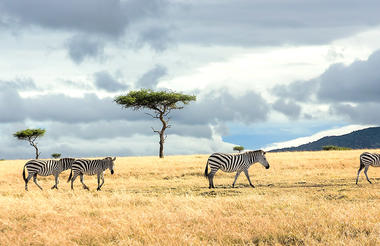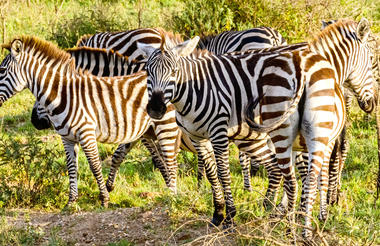Situated in southwest Kenya, the Mara North Conservancy is a beautiful private wilderness area spanning more than 30 000 hectares. It is home to a spectacular array of plants, reptiles, birds and mammals; including elephant, rhino, buffalo, lion, leopard, cheetah and large concentrations of wildebeest, zebra, gazelle and other migratory wildlife. Leopard Gorge, in the heart of the conservancy, is famous as the setting of countless BBC Big Cat Diaries and National Geographic documentaries. Neighbouring the well-known Maasai Mara National Reserve, this conservancy is vital for sustaining the famous Serengeti wildebeest migrations as well as the endangered African wild dog and black rhino.



Southern Serengeti is characterized by short grass plains stretching endlessly to the horizon. Here and there, rock kopjes break above the horizon to provide refuge to lion, leopard and cheetah, who take advantage of the high ground to get a good view of potential prey or to catch the breeze. In the far South, the Ndutu area is an area of acacia woodland and lakes, in clear contrast to the open plains. Southern Serengeti is home to the Wildebeest migration from December to April in a normal year, when over a million Wildebeest arrive to calve in the open. For the rest of the year, there are always good numbers of gazelle and predators about.
To the West, Serengeti is flanked by Maswa Game Reserve and the Makao Open Area, while to the South lies Ngorongoro Conservation Area. Maswa and Makao are very different from the open plains, being an area of denser woodland and acacia forest, interspersed by numerous rivers and waterholes. Maswa and Makao are dry-season refuges for much of Serengeti's wildlife, while also host to large herds of Wildebeest and Zebra as they pass through on their way to or from the open plains at calving time.







